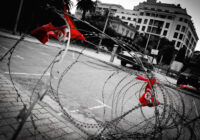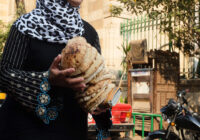Kuwaiti politics is frozen in the status quo and is heavily entrenched in domestic issues, rather than regional or international.
The results of Kuwait’s recent parliamentary elections, held in November 2016, have significant implications for the country’s citizens. Although the Kuwaiti government asserts that the surprise dissolution in October of the national assembly was due to “circumstances in the region” and security challenges, the move was actually part of the government’s strategy, albeit ill-fated, to create a more favorable balance in the new parliament between opposition and government.
The government is justifiably concerned with the country’s political environment. The years between 2006 and 2013 were fraught with tension related to parliamentary dysfunction. Street protests in response to the paralysis of the country’s political and economic institutions were frequent.
The subsequent “pro-government” 2013 parliament was, in contrast, the most stable assembly in many years and was compliant only because the main opposition groups had boycotted the previous election in 2013. Nonetheless, the lowering of fuel subsidies during this period has created widespread discontent among broad swathes of Kuwaiti society. Since September 2016, the price of premium gas has risen by 83% (to $0.55 a liter), mid-grade 62% (to $0.35) and regular 42% (to $0.28)—the first major reduction in subsidies throughout 50 years of pricing controls.
SUBSIDY CUTS IN KUWAIT
Subsidized gas is one of the oldest benefits Kuwaitis enjoy and is an important symbol of the welfare state. Furthermore, the “social contract” between state and citizen in Kuwait is increasingly predicated on more lavish social spending. According to a 2011 International Monetary Fund (IMF) report, total government subsidies jumped from $2.6 billion in 2005 to $11 billion in 2010. Wages and salaries jumped from $6.9 billion in 2005 to $13 billion in 2010. Public sector salaries and subsidies increased by a staggering 540% from 2001 to 2011. There are no tangible signs that these increases will be reduced.
Context is important here. One must avoid comparing the reduction of subsidies to the neoliberal policies enacted by other countries, including those of Saudi Arabia. It is too early to forecast the long-term impact of the gasoline price increases. Yet in the short term, Kuwait is well-placed to ride out low oil prices, as its low production costs and stable sovereign wealth fund will cushion it from any long-term economic shifts.
More importantly, the November election results clearly illustrate the widespread opposition of Kuwaiti voters to subsidy cuts and to the previous assembly. Voter turnout was approximately 70% (of 483,000 Kuwaiti women and men), according to official sources. Turnout in the two previous parliamentary elections was as low as 40%.
The election season was not without its issues. There were numerous disputes over the eligibility of candidates and the cassation court barred 47 candidates. There were also rumors of voting irregularities at several of the 100 polling stations, especially in the Third, Fourth and Fifth Constituencies, with social media documenting the claims of the affronted. In the suburb of Jaber Ali, police had to negotiate with large crowds who blocked them from collecting ballot boxes, thus delaying vote counts for over 12 hours in some neighborhoods of the Fifth. Many former opposition stalwarts, including Hussein al-Quwaiaans and Abdullah Ibrahim al-Tamimi, submitted petitions to the constitutional court, challenging the election results in the Fourth and Fifth. The effect of these events, whether real or contrived, seems to have impacted numerous Kuwaitis in these areas and will likely influence their voting behavior in the next electoral cycle.
Nonetheless, the opposition and its allies won 24 of 50 seats in the Kuwait national assembly elections, of which six were prominent opposition figures who took part in street protests back in 2011. There were 13 political newcomers, including four backed by different Kuwaiti youth liberal groups and nine representing tribal groupings. There was a 62% change from the previous parliament, most felt in the opposition areas, with a 70% change in the Third and 80% in the Fourth.
Not particularly surprising, however, was the reduction from nine to six seats of the Shia minority in the legislative body. Now the boycott is over, their electoral power is significantly reduced and vote-splitting among various Shia candidates further weakened them. Two of three Shia cabinet ministers failed in their re-election bids.
Leading the opposition are the Sunni Islamists whose core is the Muslim Brotherhood-affiliated Islamic Constitutional Movement (ICM). While it is true that around half of the successful opposition members of parliament (MP) are affiliated with various Islamist factions, their cohesiveness as a group is not as strong as it was before the 2013 boycott. The boycott has fractured many of the Islamist political blocs in Kuwait, and numerous defections and new faces have diluted their former solidarity.
As Kristin Smith Diwan, a senior resident scholar at the Arab Gulf States Institute in Washington (AGSIW), has written, Kuwait’s Islamist movements are “divided between pro-government candidates and a number of other more activist trends,” which include youth opposition candidates. Furthermore, the rise in independent Salafist candidates suggests frustration with the bloc policies of boycotting and an inability to unite Salafists from different blocs.
 Attempts to reinvigorate cross-ideological cooperation—as occurred briefly during the 2006 “Orange Movement” period to change the electoral district laws, and again in 2013 between the ICM (the tribal opposition group led by Musallam al-Barrack) and youth leader Tariq al-Mutairi of the Civil Democratic Movement—did not materialize in the run-up to the November election.
Attempts to reinvigorate cross-ideological cooperation—as occurred briefly during the 2006 “Orange Movement” period to change the electoral district laws, and again in 2013 between the ICM (the tribal opposition group led by Musallam al-Barrack) and youth leader Tariq al-Mutairi of the Civil Democratic Movement—did not materialize in the run-up to the November election.
Most important are all the new parliamentary “youth” members. Youth candidates currently make up about one-third of the new assembly. Four of them are under 40 years of age. One youth candidate, Abdulwahab al-Babtain in the Third, was highly successful, winning the top place in the constituency among many other significant candidates. Several youth MPs have voiced strongly reformist and anti-corruption programs. The impact of youth candidates in Kuwaiti politics is a brand-new phenomenon. It will play a large role in addressing a trend that has increased over the last 10 years with the rise of young educated people of all social classes.
The three dominant tribal groups—the Awazem, Mutairi and Ajman—were the poorest performers. These groups gained collectively only seven seats, whereas they usually win between 15 and 18. Because of the new “one vote law” that replaced the list system during the last election, the larger tribes tried to organize by candidates’ name and tribal primary, a strategy that failed badly. Instead, smaller tribes like the al-Enezi and al-Shammari capitalized. This tactic had particularly significant implications for the Mutairi tribe in the Fifth, where too many candidates, both pro-government and opposition-minded, split the vote. A continuing trend is the divergence of interests between the youth and the older generation, who see politics and social life differently. This tribal sector of the Kuwaiti electorate is by far the most important to watch in coming elections, as the youth’s behavior can change the entire legislative dynamic of the Fifth.
NOT LIKE OTHER GULF STATES, BUT…
With regard to sectarian issues in Kuwait, one must refrain from equating any of the regional issues with domestic Kuwaiti politics. While identity based on religious sect is important in Kuwait’s social, political and economic life, sectarian tensions in Kuwait are historically not the most important division in society and should not be equated to relations between Shia and Sunni in Bahrain or in Saudi Arabia’s Shia-majority Eastern Province.
Wisely, the Kuwaiti government has enfranchised the country’s Shia citizens, who are not marginalized in any significant fashion, or at least not more than any other group. Instead, the most important split to focus on is the urban (hadhar) and rural (bedu) divide, evidenced by the continued rise of tribal Islamists and youth opposition forces from the outer areas.
Unfortunately, the new parliament looks as though it will repeat the cycle of pre-2013 assemblies, which resulted in polarization, populism and paralysis in parliament. There are two signals.
First, the contest for parliamentary speaker was an important indication of the behavior of the government to come. The former parliament speaker, Marzouk al-Ghanim, won with the support of elected and non-elected pro-government supporters. Social media has launched numerous attacks against him, accusing him, as a member of one of the country’s richest families, of corruption and pro-government leanings. His tenure as speaker will likely not assuage the interests of opposition members.
The second sign relates to the appointment of specific members of the cabinet. There are seven new faces, including a new oil minister, but the reappointment of Prime Minister Sheikh Jaber Mubarak al-Sabah, who has held the post since late 2011, and who comes despite calls for change by a number of opposition MPs, sends the clearest signal that not much will change from previous eras of conflict. The fact that Anas al-Saleh also remains finance minister, despite strong criticism of his economic policies that include reducing subsidies, indicates that the current austerity program will continue.
Many opposition MPs have already noted their objections. “We have been disappointed as we expected to see a strong government to meet our aspirations,” declared MP Mubarak al-Hajraf. MP Youssef al-Fadhalah tweeted: “The prime minister failed to read the outcome of the election and the verdict of the people in rejecting the previous cabinet and parliament.” Opposition Islamist MP Waleed al-Tabtabaei added Finance Minister Anas al-Saleh to a list of at least six ministers who have already been rejected as potential “crisis-makers.” MP al-Humaidi al-Subaei and Riyadh al-Adasani have also raised a warning that they will attempt to safeguard the parliament from government austerity measures.
The opposition in the new parliament can be expected to greatly resist any fiscal budgetary cuts and privatization drives. Furthermore, the opposition will likely attempt to roll back the fuel subsidies cut enacted during the last assembly. It is anticipated that the gap between the government and the opposition will result in the same style of interpellation or threats of “grillings” that have historically led to other parliaments’ downfalls before 2013.
The next election is already on the horizon, expected to be held in mid-2017, according to many local observers. It does not appear, however, that the next cycle will be any different from previous opposition periods. Tensions will probably escalate.
At this juncture, Kuwaiti politics is frozen in the status quo and is heavily entrenched in domestic, rather than regional or international, issues. Until the government and opposition can agree upon a cabinet and a policy platform that satisfies both parties, this cycle could continue for many years. The important event on the horizon is the rise of Kuwait’s youth and their deepening involvement in their country’s politics. Only time will tell what that phenomenon will bring.
*[This article was originally published by Gulf State Analytics, a partner institution of Fair Observer.]
The views expressed in this article are the author’s own and do not necessarily reflect Fair Observer’s editorial policy.
Photo Credit: Pawel Gaul
Support Fair Observer
We rely on your support for our independence, diversity and quality.
For more than 10 years, Fair Observer has been free, fair and independent. No billionaire owns us, no advertisers control us. We are a reader-supported nonprofit. Unlike many other publications, we keep our content free for readers regardless of where they live or whether they can afford to pay. We have no paywalls and no ads.
In the post-truth era of fake news, echo chambers and filter bubbles, we publish a plurality of perspectives from around the world. Anyone can publish with us, but everyone goes through a rigorous editorial process. So, you get fact-checked, well-reasoned content instead of noise.
We publish 2,500+ voices from 90+ countries. We also conduct education and training programs
on subjects ranging from digital media and journalism to writing and critical thinking. This
doesn’t come cheap. Servers, editors, trainers and web developers cost
money.
Please consider supporting us on a regular basis as a recurring donor or a
sustaining member.
Will you support FO’s journalism?
We rely on your support for our independence, diversity and quality.






